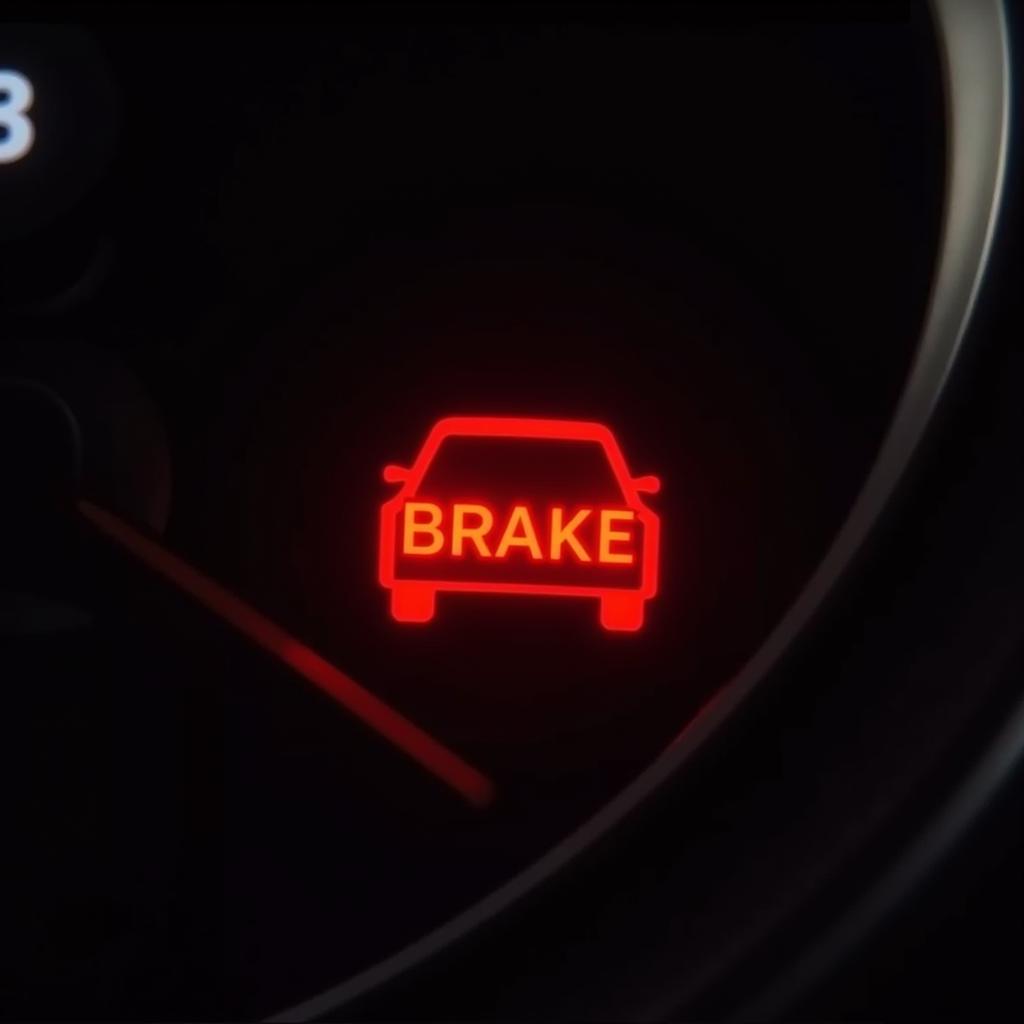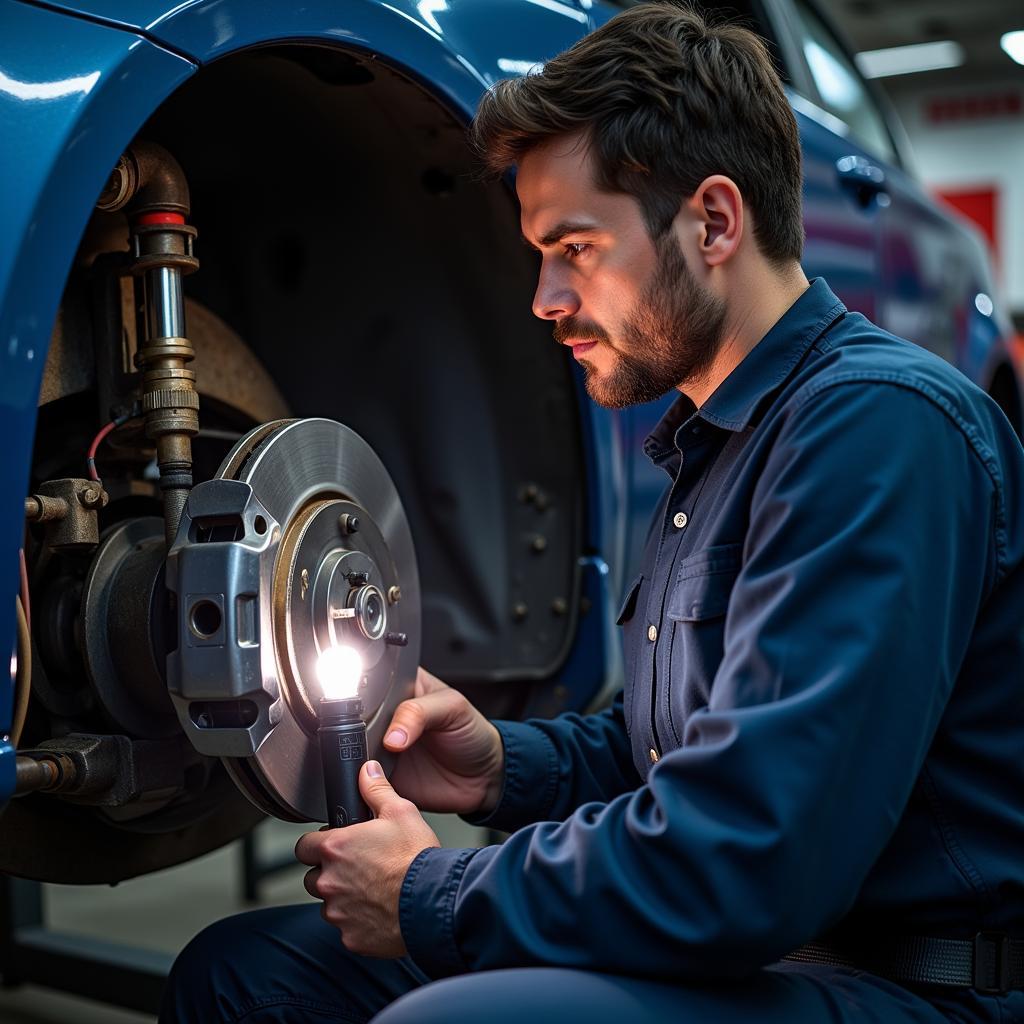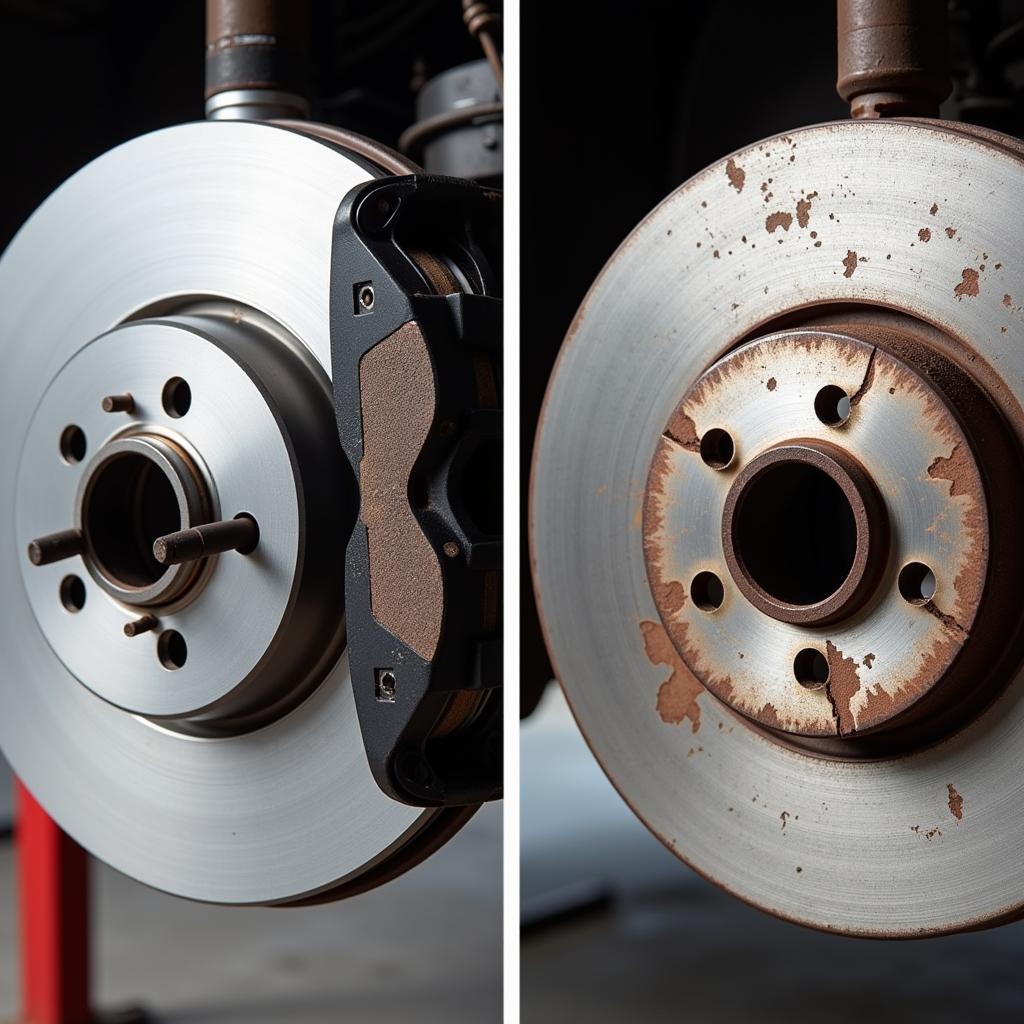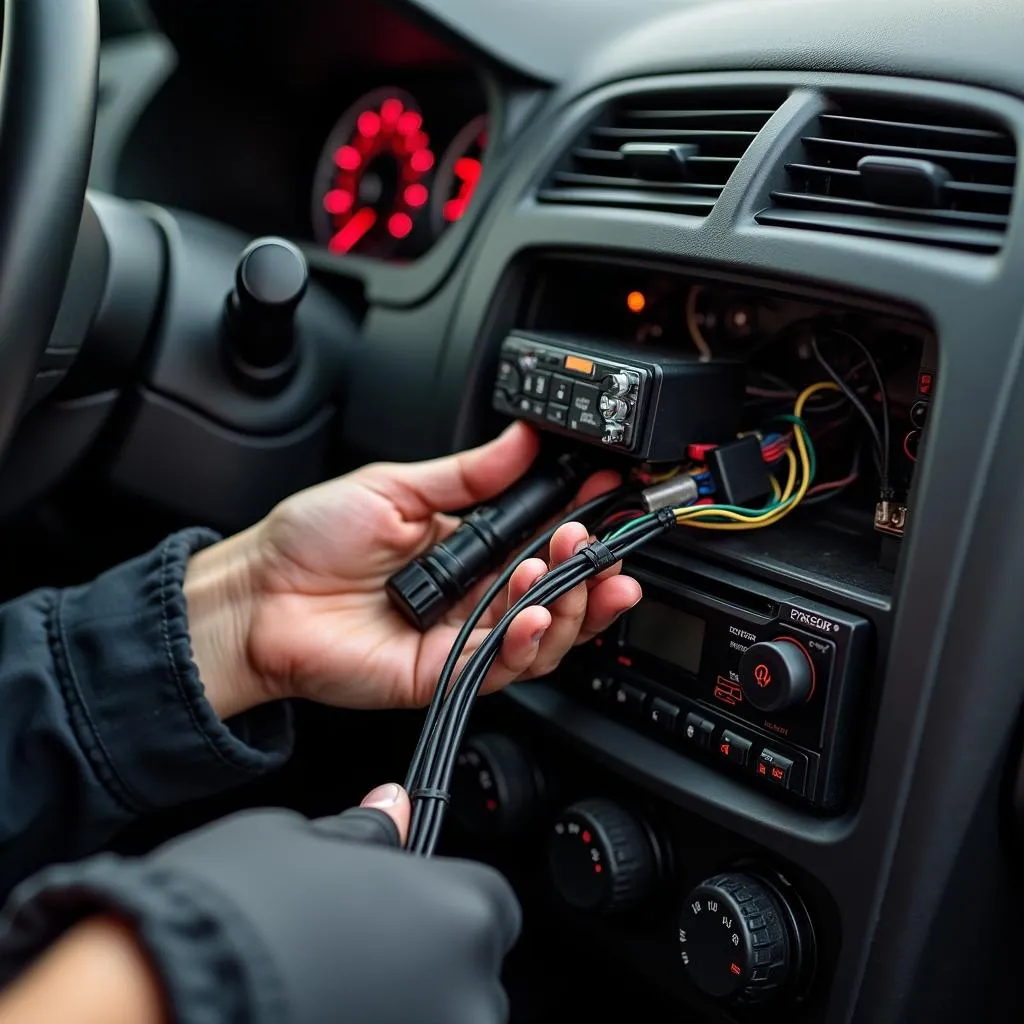The brake system warning light, often a menacing red exclamation point within a circle, is hard to miss on your dashboard. Its sudden illumination can trigger anxiety, and rightly so, as it signals a potential issue with one of your vehicle’s most critical safety systems. Knowing the brake system warning light location is just the first step. Understanding why it’s on and how to address the underlying problem is crucial.
Understanding Your Brake Warning Light
This bright warning light isn’t designed to cause panic but to grab your attention. Its presence on your dashboard signifies one or more of the following issues:
- Low Brake Fluid: This is the most common culprit. The brake system operates on hydraulic pressure, and low fluid levels can severely impact braking performance.
- Engaged Parking Brake: It might seem obvious, but many drivers overlook this simple possibility. The warning light serves as a reminder if the parking brake isn’t fully disengaged.
- Brake System Malfunction: A fault within the braking system, such as a leak in the brake lines or a problem with the ABS (Anti-lock Braking System), can trigger the warning light.
- Worn Brake Pads: Most modern vehicles have sensors that monitor brake pad wear. When the pads reach a certain thickness, the warning light will illuminate to remind you to replace them.
 Brake Warning Light on Dashboard
Brake Warning Light on Dashboard
What to Do When the Light Turns On
The appearance of the brake warning light demands immediate attention, but don’t panic. Here’s a step-by-step guide:
- Safely Pull Over: As soon as it’s safe, pull your vehicle off the road and come to a complete stop.
- Check Your Parking Brake: Ensure your parking brake is fully disengaged. If it was engaged, disengaging it might be enough to switch the light off.
- Inspect Your Brake Fluid: Locate your brake fluid reservoir under the hood (refer to your owner’s manual for the exact location). Check the fluid level. If it’s low, adding brake fluid might temporarily resolve the issue, but it’s essential to have the system inspected for leaks.
- Avoid Driving: If the light remains illuminated after checking the parking brake and brake fluid, do not continue driving. Driving with a compromised brake system is incredibly dangerous.
When to Seek Professional Help
While a simple disengaged parking brake or low brake fluid might seem like an easy fix, it’s crucial to remember that the brake system is complex. Any indication of a problem warrants professional inspection. A qualified mechanic can:
- Diagnose the Problem: Using specialized equipment, they can accurately pinpoint the root cause of the warning light.
- Repair Leaks: Brake fluid leaks are a serious safety hazard and require immediate professional repair.
- Replace Worn Components: Whether it’s brake pads, rotors, calipers, or other brake system components, a mechanic will ensure your vehicle is equipped with safe and reliable parts.
- Check Electronic Systems: Modern vehicles often have electronic brake distribution systems and ABS. A mechanic can diagnose and repair any issues within these systems.
 Mechanic Inspecting a Vehicle's Brake System
Mechanic Inspecting a Vehicle's Brake System
Brake Warning Light in Specific Car Models
While the location and design of the brake warning light are generally standardized, some slight variations might exist depending on your car’s make and model. Here are some examples:
- 2005 Subaru Forester Brake Warning Light: In the 2005 Subaru Forester, the brake warning light is typically a red circle with an exclamation mark in the center, located within the instrument cluster.
- VW Jetta Brake Warning Light: VW Jetta models usually feature a similar red warning light for the brake system, often accompanied by a warning message on the multi-function display.
“It’s always best to refer to your vehicle’s owner’s manual for the precise location and meaning of warning lights specific to your car,” says John Smith, Senior Automotive Technician at ABC Auto Repair. “Ignoring these warnings can lead to more extensive and costly repairs down the line.”
Prevention is Key
While the brake system warning light is designed to alert you of problems, proactive maintenance can prevent many issues.
- Regular Brake Inspections: Have your brakes inspected by a qualified mechanic at least once a year or as recommended in your owner’s manual.
- Brake Fluid Flush: Brake fluid should be flushed and replaced every 2-3 years to prevent moisture contamination and maintain optimal performance.
- Mindful Driving Habits: Aggressive driving with frequent hard braking puts excessive strain on the brake system, leading to faster wear and tear.
 Worn Out Brake Pads and Rotors
Worn Out Brake Pads and Rotors
FAQs about Brake Warning Lights
Q: Can I drive a short distance with the brake warning light on?
A: No. Driving with a potentially compromised brake system is extremely dangerous. Even a short distance poses a significant risk.
Q: What if the brake warning light flickers intermittently?
A: A flickering brake warning light could indicate a more serious intermittent problem within the brake system, such as a failing sensor or loose connection. Seek professional inspection immediately.
Q: Will the brake warning light come on if my brake pads are worn?
A: Yes, most modern cars have wear sensors that trigger the brake warning light when the brake pads reach a certain level of wear.
Q: Is it safe to add brake fluid myself?
A: While you can temporarily add brake fluid to a low reservoir, it’s crucial to have a mechanic identify the reason for the low fluid level, as it often indicates a leak.
Don’t Ignore the Warning
The brake system warning light location is strategically placed on your dashboard for a reason—to capture your immediate attention. Understanding what triggers this warning light and taking appropriate action can be the difference between a minor inconvenience and a serious accident.


